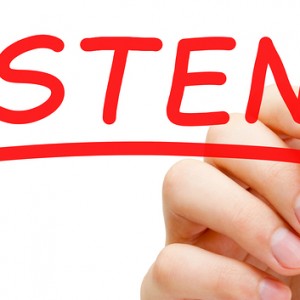
Power Listening: A Key Skill of Great Leaders
Leaders who listen really well have more influence. They inspire us to go the extra mile. Yet most of us take listening for granted. How

Leaders who listen really well have more influence. They inspire us to go the extra mile. Yet most of us take listening for granted. How

In my previous post, I mentioned that the ability to really listen is the most overlooked and undervalued skill in both business and personal life.

How come it’s so hard to listen? What good is it to ask people powerful questions when so many of us rarely do a good

Today’s leaders face innumerable challenges that previous generations never confronted: employee disengagement, cloud-based speed of commerce, political correctness, cultural diversity, social sensitivities, and a hyper-focus

I think we can all agree: we know how important it is for leaders to step up their skills, and practice, in the art of

People are naturally drawn to leaders who establish trust and confidence through powerful interpersonal communication. When managers and leaders communicate interpersonally, employees feel cared for

We’ve all spent time with lousy listeners who treat conversations as opportunities to broadcast their status or ideas. They spend more time formulating their next

As hard as giving and receiving feedback is, perhaps listening is more difficult. To succeed in any position in any business, we are increasingly required

An organization’s health is only as sound as its leader’s decisions. Some companies prosper from wise leadership directions, while others struggle after flawed choices—choices that

How a leader responds to adversity reveals how effective that leader truly is. Reactions to setbacks or crises not only test leadership character but define

Business is an active, demanding endeavor. Only those who consistently apply themselves succeed. Organizations that thrive require leaders who actively dream, plan, engage, solve, pursue,

Surveys and studies indicate global job dissatisfaction is at a two-decade high. Disengaged employees account for nearly 70 percent of the workforce, which significantly affects







